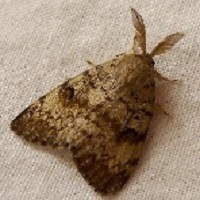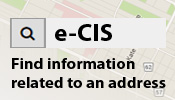Holiday season – View holiday hours for City of Winnipeg facilities and services from December 24 to January 1.
Spongy Moth
What are spongy moths?
The spongy moth, Lymantria dispar, is a moth in the family Lymantriidae of Eurasian origin. Spongy moth is a pest of trees in many regions of the world but is not native to North America. Originally ranging from Europe to Asia, it was introduced to North America in the late 1860s by a French naturalist attempting to cross the European spongy moth with North American silkworms. His intent was to establish a silk industry on this continent. Some of the insects escaped and have since established themselves in Northeastern United States and Eastern Canada.
What does the spongy moth look like?
The spongy moth overwinters in egg masses attached to the bark of trees. The egg masses, usually about the size of a one dollar coin, are buff to tan in colour and may contain from 100 to 1,000 eggs. The eggs hatch into caterpillars (larval stage) when tree buds begin to open. This stage, lasting up to seven weeks, is when the insect feeds. The caterpillar is easily recognizable in the latter part of this stage: charcoal grey with a double row of five blue and six red dots on its back. The adult female is approximately 30 mm long, white, with zigzag markings on its wings. The female is incapable of flight and dies about one day after laying its eggs. The male is a brownish colour, much smaller, and survives about one week, mating with several different females.
 Male MalePhoto credit: Gail Hampshire under license CC BY 2.0 |
 Female Female
|
What does spongy moth damage look like?
Spongy moths are a concern because the larvae feed voraciously on the leaves of both deciduous and coniferous trees. During the larval stage, a spongy moth caterpillar can eat an average of one square metre of foliage. Leaves play a major role in food production for the tree, converting light into food by photosynthesis. Reducing the number of leaves available to capture sunlight results in a loss in food production. Deciduous trees can sometimes produce a second crop of leaves, but after repeated defoliations trees may become so weakened that they are susceptible to secondary infestations. Evergreens may die after only one defoliation.
How can I control spongy moths?
You can help control the spongy moth by looking for signs of infested material in wood piles. If you plan on moving firewood, nursery stock or logs inspect them for signs of the spongy moth. If you see signs do not move the infested material. If you think you have found the spongy moth you should:
- Record the location of the tree,
- Record the Signs and Symptoms you observed,
- Collect an adult specimen, keep it in a container in a freezer (to preserve it), and
- Contact the Canadian Food Inspection Agency or call the 1-800-442-2342.
Physical control
It is important to be thorough when looking for egg masses as they may be difficult to locate. Common hiding places are the underside of branches, tree trunks, fences, firewood, outdoor furniture, swing sets, boats, trailers and under the eaves of buildings. When an egg mass is observed it should be scraped off with a knife and dropped into a bucket filled with hot water and household bleach or ammonia. Larvae and pupae can be handpicked and crushed. Some persons are sensitive to the long hairs of the larvae. As a precaution, gloves should be worn when handling the insect.
Biological control
Bacillus thuringiensis var. kurstaki (Btk) is a selective biological insecticide which controls lepidopterous larvae (caterpillars). Btk crystals release a toxic protein when dissolved in the alkaline digestive system of the insect. The caterpillar stops feeding soon after, and dies within five days. Other insects, mammals, birds and fish are not affected by Btk.
Where can I find additional information?
Province of Manitoba: Forest Health, Urban Forestry and Forest Renewal


